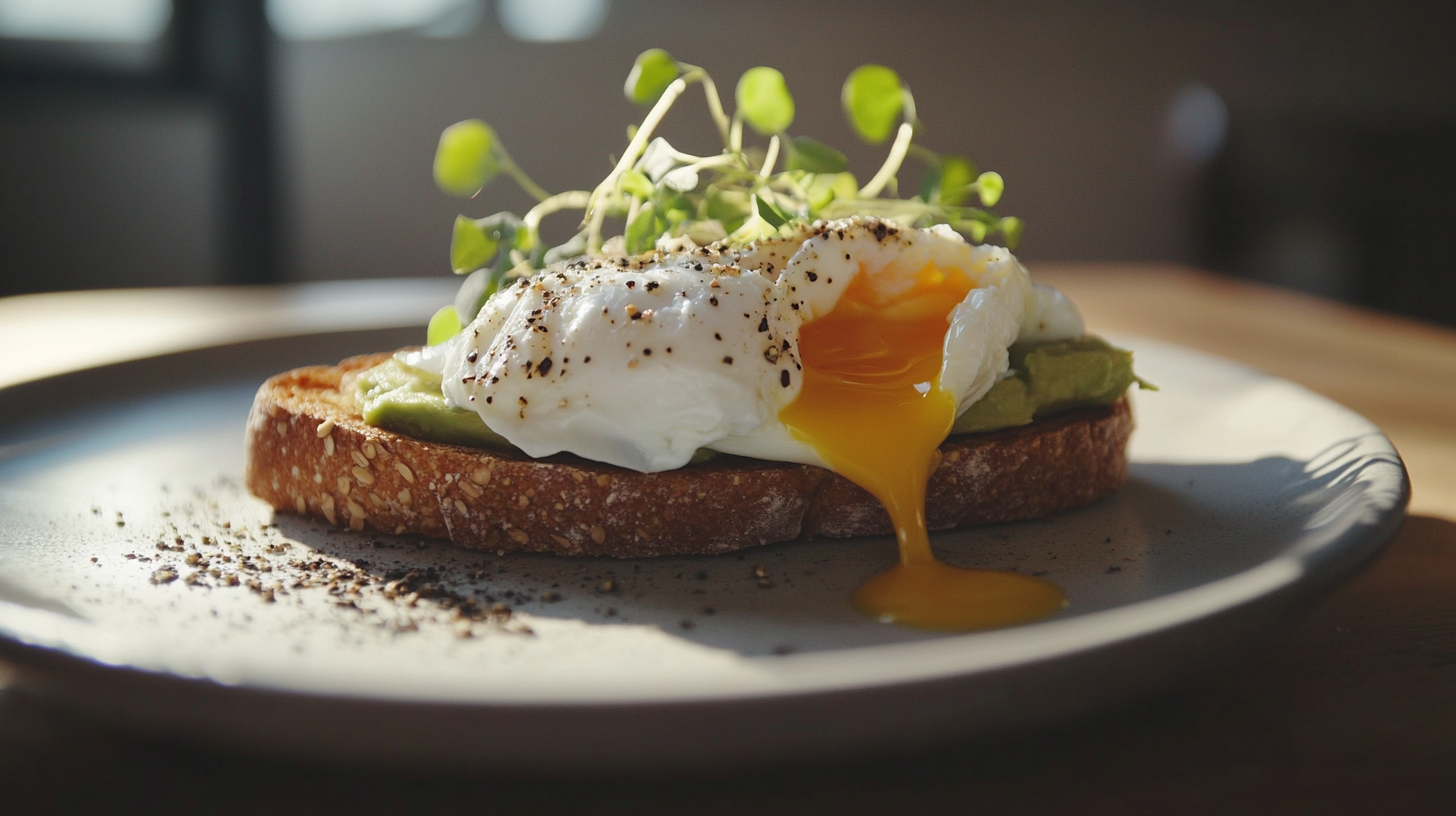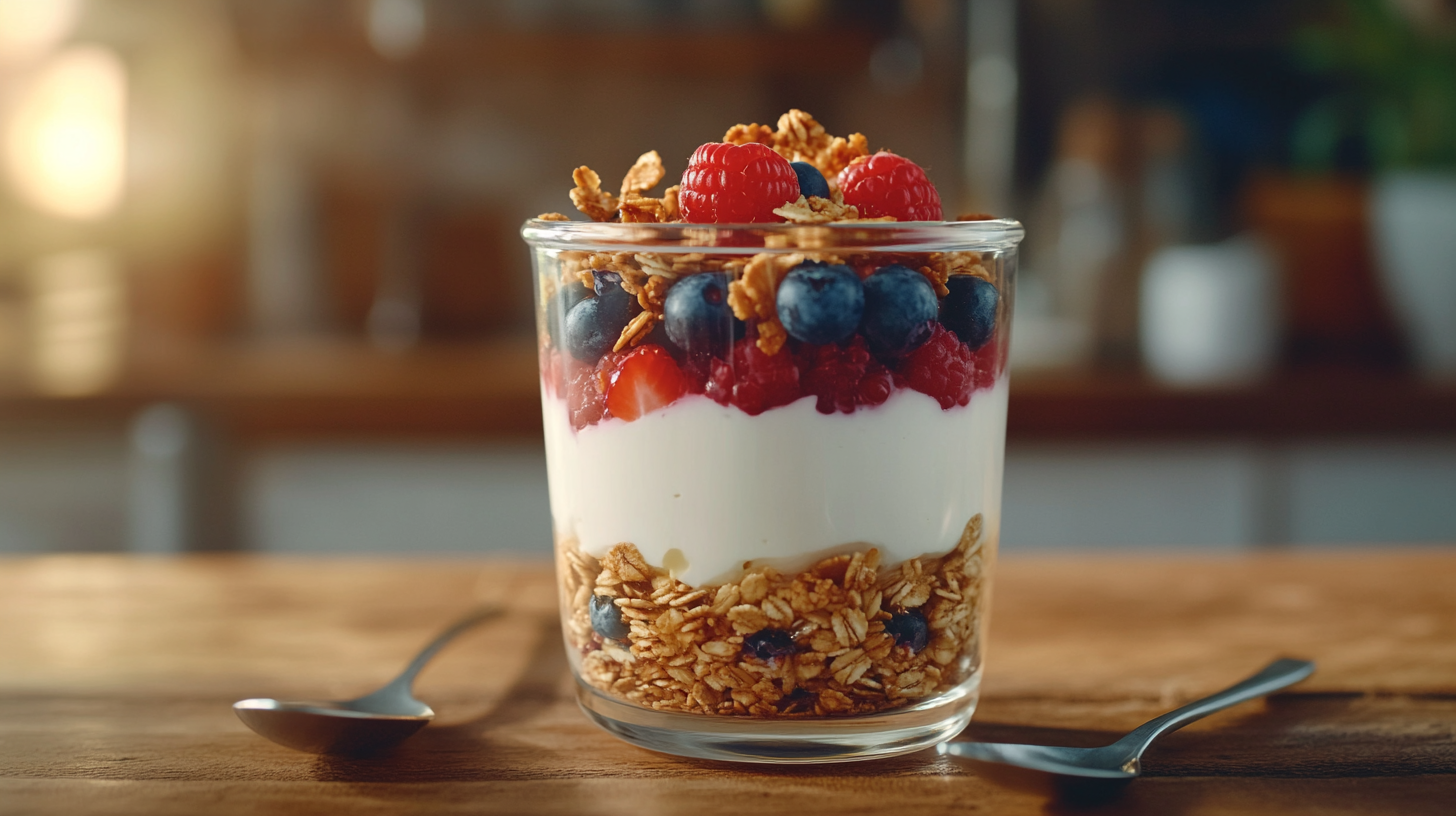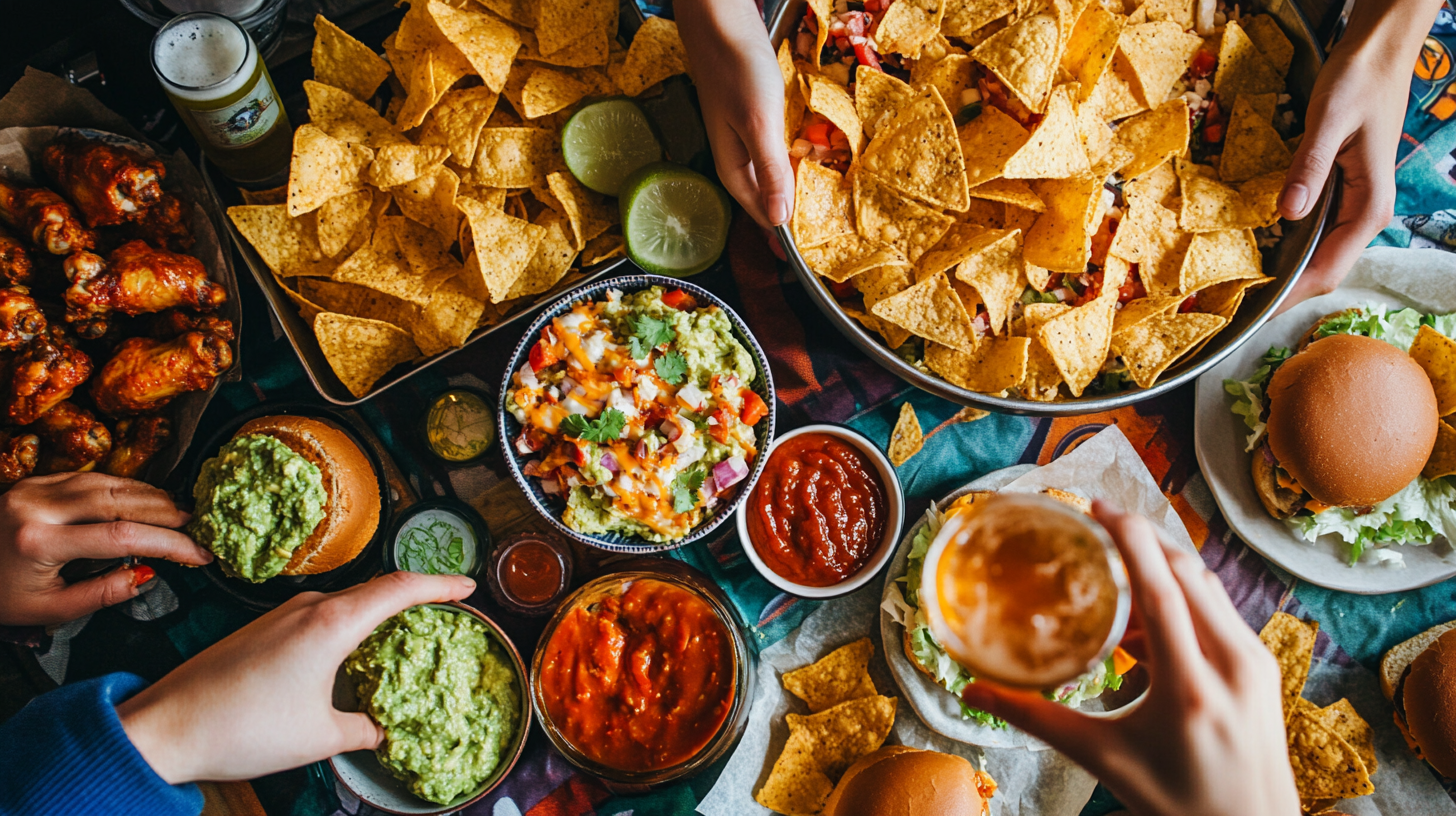How Healthy is Avocado Toast with Egg?

Introduction
How healthy is avocado toast with egg? This popular breakfast choice is loved for its rich nutrition, balanced macronutrients, and delicious taste. It combines healthy fats from avocado, high-quality protein from eggs, and fiber from whole grain bread, making it a satisfying and nutritious meal.
According to the Harvard T.H. Chan School of Public Health, avocados provide heart-healthy monounsaturated fats, while the American Heart Association states that eggs can be part of a balanced diet despite cholesterol concerns.
If you’re wondering about the best ways to prepare this meal, check out this Avocado Toast with Poached Egg guide for a nutrient-rich variation.
For a breakdown of different preparation methods, you might also explore this guide: Is Avocado and Poached EggGood for You?.
Nutritional Breakdown of Avocado Toast with Egg

1. Avocado: The Superfood
Avocados are nutrient-dense and contain:
- Monounsaturated fats that support heart health
- Fiber for digestion and gut health
- Vitamins C, E, K, and B6 for immune and skin health
- Potassium (more than bananas) for blood pressure regulation
For a nutrient-dense avocado toast recipe, check out this detailed guide on Avocado Toast with Poached Egg.
2. Eggs: A Protein Powerhouse
Eggs contribute to:
- High-quality protein (6g per egg) for muscle repair
- Choline, crucial for brain function
- Vitamin D for bone health
- Antioxidants (lutein & zeaxanthin) that support eye health
3. Bread: The Base Matters
The choice of bread can impact the overall health benefits:
- Whole grain or sprouted bread: High in fiber, stabilizes blood sugar
- White bread: Refined carbs that may cause sugar spikes
- Sourdough: Contains probiotics that support gut health
The Mayo Clinic highlights the benefits of whole grains in preventing heart disease and maintaining digestive health.
Health Benefits of Avocado Toast with Egg
1. Heart Health
- Monounsaturated fats in avocados help reduce LDL (bad cholesterol) and increase HDL (good cholesterol).
- Eggs contain choline, which supports brain and cardiovascular function.
- Whole grain bread adds fiber, further lowering heart disease risk.
Beyond heart health, avocado toast with egg supports digestive wellness, thanks to its rich fiber content from both the avocado and whole grain bread. Fiber is essential for gut health, helping to regulate digestion, prevent constipation, and support beneficial gut bacteria. A single avocado contains around 10 grams of fiber, contributing to healthy bowel movements and improved nutrient absorption. Whole grain bread further enhances this benefit by adding insoluble fiber, which helps food pass more smoothly through the digestive system. Research from the Mayo Clinic highlights that diets high in fiber can reduce the risk of colon cancer, promote satiety, and aid in weight management.
Additionally, avocados contain natural prebiotics, which help nourish beneficial gut bacteria, contributing to a balanced microbiome. This is especially important for individuals experiencing digestive issues, bloating, or irregular bowel movements, as maintaining a healthy gut has been linked to better immunity, reduced inflammation, and even improved mental health. The combination of healthy fats, fiber, and protein in avocado toast with egg helps stabilize digestion by ensuring a slow release of energy throughout the day. Compared to refined carbohydrates, which can cause blood sugar crashes and sluggish digestion, this balanced meal keeps the gut working efficiently without discomfort.
For individuals looking to maximize digestive health, adding fermented foods like kimchi, sauerkraut, or a drizzle of kefir-based dressing on top of avocado toast can provide probiotics that complement the meal’s natural prebiotics. By enhancing your toast with gut-friendly ingredients, you can turn this simple breakfast into a powerful digestive aid that promotes overall well-being.
2. Weight Management & Satiety
- Avocados contain fiber and healthy fats, promoting longer satiety.
- Eggs provide protein, reducing cravings throughout the day.
- The combination of fiber, fat, and protein stabilizes blood sugar, preventing energy crashes.
3. Brain & Eye Health
- Choline in eggs enhances memory and cognitive function.
- Lutein and zeaxanthin in eggs improve eye health and reduce the risk of macular degeneration.
4. Blood Sugar Regulation
- Whole grain toast has a low glycemic index, preventing sugar spikes.
- Healthy fats in avocado slow digestion, keeping glucose levels stable.
Potential Downsides of Avocado Toast with Egg
1. High-Calorie Content
While avocado toast with egg is nutritious, it can be calorie-dense. One serving can range from 300-500 calories, depending on portion size and added toppings.
While avocado toast with egg is generally a nutritious meal, one potential concern is its omega-6 to omega-3 ratio, particularly when using certain types of bread and cooking oils. Avocados contain heart-healthy monounsaturated fats, but they also have some omega-6 fatty acids, which, in excess, can contribute to inflammation if not balanced with omega-3s. While omega-6 fats are necessary in small amounts, the modern diet tends to be overloaded with them, leading to an imbalance that can increase the risk of inflammation-related conditions like arthritis and metabolic disorders.
One way to counteract this imbalance is by incorporating omega-3-rich foods into your meal. Adding chia seeds, flaxseeds, or hemp seeds to avocado toast can boost omega-3 intake and help balance fatty acid ratios. Another excellent addition is wild-caught smoked salmon, which is naturally high in anti-inflammatory omega-3s, further enhancing the toast’s nutritional profile. If using oils to prepare eggs, opt for olive oil or avocado oil rather than vegetable oils high in omega-6 fats, such as canola or soybean oil.
By making these small ingredient adjustments, you can ensure that your avocado toast with egg remains not only a delicious and nutritious option but also an anti-inflammatory meal that supports long-term health. Balancing omega-6 and omega-3 intake is essential for reducing chronic inflammation and promoting heart, brain, and joint health—key factors that make this meal even more beneficial.
2. Cholesterol Concerns
Although eggs were once feared for raising cholesterol, research confirms moderate consumption is not linked to heart disease for most people. However, individuals with high cholesterol should monitor intake.
3. Nutrient Balance
- Some variations lack enough protein for a balanced meal.
- Using refined bread negates many of the benefits.
How to Make Avocado Toast with Egg Even Healthier

1. Choose the Right Bread
- Best options: Whole grain, sprouted grain, or sourdough
- Avoid: White bread, as it lacks fiber and nutrients
2. Optimize Egg Preparation
- Healthiest methods: Poached, boiled, or scrambled with minimal oil
- Less ideal: Fried eggs with butter or excess oil
To explore the healthiest ways to prepare eggs, read Healthiest Way to Eat an Egg.
3. Add Nutrient-Rich Toppings
- Leafy greens (spinach, arugula): Extra vitamins & minerals
- Seeds (chia, flax, hemp): Omega-3 fatty acids for heart health
- Fermented foods (kimchi, sauerkraut): Supports gut health
4. Watch Your Portions
- Stick to ½ an avocado per serving
- Use one egg to balance protein intake
- Choose one slice of whole grain bread instead of two
For those looking to take their avocado toast to the next level, incorporating herbs and spices can boost both flavor and health benefits. Herbs such as cilantro, parsley, and basil contain antioxidants and anti-inflammatory properties, helping to detoxify the body and support immune function. Cilantro, for example, is known for its ability to remove heavy metals from the body, while parsley is rich in vitamin K, which promotes bone health. Sprinkling fresh herbs on top of avocado toast can add a refreshing taste while enhancing its nutrient profile.
Spices are another powerful addition that can turn this meal into a functional superfood dish. Adding turmeric provides curcumin, a potent anti-inflammatory compound, while a pinch of cayenne pepper can boost metabolism and improve circulation. Garlic powder is another excellent choice, as it contains allicin, a compound known for its antibacterial and immune-boosting properties. Pairing these spices with a squeeze of lemon juice not only enhances flavor but also provides vitamin C, which helps with iron absorption and immune support.
If you prefer a sweeter twist on avocado toast, consider adding a drizzle of raw honey and a sprinkle of cinnamon. Cinnamon has been shown to help regulate blood sugar levels and improve insulin sensitivity, making it a great option for those watching their glucose levels. The beauty of avocado toast with egg is its versatility—you can experiment with different flavors, textures, and nutrient-packed ingredients to create a meal that is both delicious and highly beneficial for overall health.
FAQs: What People Also Ask
1. Is Avocado Toast with Egg Good for Weight Loss?
Yes! The protein, fiber, and healthy fats promote fullness, reducing overall calorie intake.
2. How Many Calories Are in Avocado Toast with Egg?
- Basic recipe: ~300-350 calories
- With toppings (cheese, butter, bacon): 400+ calories
3. Can I Eat Avocado Toast with Egg Every Day?
Yes, but vary toppings and bread choices to maintain balanced nutrition.
4. What’s the Healthiest Way to Prepare It?
- Use whole grain bread
- Prepare eggs poached or boiled
- Avoid butter and heavy oils
5. Is Avocado Toast with Egg High in Protein?
It contains moderate protein (~10-15g per serving). For higher protein, add:
- Extra egg whites
- Greek yogurt on the side
- Smoked salmon for added lean protein
Conclusion
Avocado toast with egg is a powerhouse meal combining healthy fats, fiber, and high-quality protein. It supports heart health, weight management, and brain function, making it an excellent breakfast choice.




